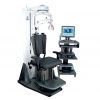
Understanding the CMS Changes to SNF Reimbursement
Practice ManagementHealthcare is moving away from fee-for-service toward value-based care that relies on clinical outcomes. To align with these changes, CMS implemented a new reimbursement model for SNF facilities called the Patient-Driven Payment Model, or PDPM.
On October 1, 2019—the start of the 2020 fiscal year—the Centers for Medicare and Medicaid Services (CMS) rolled out a major change to the skilled nursing facility (SNF) payment system. This new reimbursement plan is projected to have a significant impact on physical therapists, occupational therapists, and other professionals working in the SNF setting, as well as the patients and residents who fall under their care.
Here are three key points to help you understand this new SNF reimbursement model and how it affects your practice.
1. The new SNF reimbursement model from CMS is called the Patient-Driven Payment Model, or PDPM
Healthcare as a whole is moving away from fee-for-service model toward value-based care that relies on clinical outcomes.1 In order to align with these changes in evidence-based medicine, CMS implemented a new reimbursement model for SNF facilities called the Patient-Driven Payment Model, or PDPM.
As described in a 2018 paper published in Annals of Long Term Care, PDPM is “a case-mix reimbursement model that will pay SNFs based on how they meet a patient’s needs using ICD-10 diagnosis codes, patient characteristics, and other clinically relevant factors to classify patients.”2
Unlike the previously used RUG-IV system, where payments were calculated largely based on the amount of skilled therapy minutes, Medicare reimbursement to SNF facilities under PDPM are now based on every aspect of a resident’s care including non-therapy ancillary services (NTAS) like drugs and medical supplies.2 PDPM assigns each resident a specific “case-mix classification” based on the anticipated resources needed during their stay, and this classification will drive that individual patient’s reimbursement rate on a per diem basis.3
As a result of these changes, CMS projects that the aggregate payments to SNFs will increase by about 2.4% in the 2020 fiscal year, or about $851 million.4
2. The main proposed benefit of the PDPM is improved delivery of care
One proposed benefit of the new PDPM is that it will help capture the extent of care needed for more medically complex patients.2
Another is that SNFs will no longer be incentivized to provide services beyond what is clinically necessary for the patient, since they won’t be getting paid for therapy services beyond the determined resident classification.3
It also incentivizes SNF facilities to ensure they are not under-delivering services because this could impair clinical outcomes and lead to Medicare audits, rate cuts, penalties, and reimbursement denials.3
3. The new reimbursement model will impact workflow and staffing for physical therapists and occupational therapists
There are several ways the PDPM will potentially affect the way skilled therapy services operate in the SNF setting:
Since facilities will no longer be reimbursed based on how many minutes of physical therapy and occupational therapy they provide, there will almost certainly be less total therapy minutes provided out of respect for cost-effectiveness. Accordingly, SNFs are expected to have a lower demand for physical therapists and occupational therapists on staff.3
Physical therapists and occupational therapists concerned about job security will now more than ever need to show evidence for the clinical effectiveness and efficacy of their skilled care.
Physical therapy and occupational therapy, but not speech therapy, will see payment reductions after 20 days of service in the SNF setting.5 Despite this, many believe this payment reduction won’t have a significant impact on facility revenue since the average length of stay is only 25 days.5 Plus, since a proportion of therapy dollars will be reallocated to nursing and other departments, SNFs may be able to offset this loss in therapy reimbursement by improving the quality of nursing care.3
There is now a 25% limit on group and concurrent therapy.2 In other words, at least 75% of skilled care provided to each patient must be individual. According to the American Physical Therapy Association (APTA), which advocated for a less rigid definition of group therapy, CMS now defines group therapy in the SNF setting as “2 to 6 patients doing the same or similar activities—the same definition used in inpatient rehabilitation settings.”6
Of course, physical therapists and occupational therapists must still take into account patient goals when determining the therapy intensity and frequency. But under the new PDPM model, there is now less focus on how many “minutes” they should be getting with each patient and instead more of a focus on whether their plan of care will appropriately and efficiently address their patient’s needs.
Overall, these changes to the SNF reimbursement model aim to ensure patients receive the highest quality of care possible—care that is at once evidence-based and individualized. As for physical therapists, occupational therapists, and other professionals within the SNF setting, the new reimbursement changes are likely going to be both freeing and challenging. Having the right tools and resources will be essential for optimizing this major shift in healthcare.
What do you think?
We want to hear from you. What do you think about these changes from CMS? How does it affect your practice?
References
-
- Changing Landscape: From Fee-for-Service to Value-Based Reimbursement. (n.d.). Retrieved October 6, 2019, from https://www.niddk.nih.gov/health-information/communication-programs/ndep/health-professionals/practice-transformation-physicians-health-care-teams/why-transform/changing-landscape-fee-service-value-based-reimbursement
- Stefanacci, R. G. (n.d.). How Reimbursement Changes for Long-Term Care Will Impact Who and How We Care. Retrieved October 6, 2019, from https://www.managedhealthcareconnect.com/articles/how-reimbursement-changes-long-term-care-will-impact-who-and-how-we-care
- Understanding the Patient-Driven Payment Model (PDPM). (n.d.). Retrieved October 6, 2019, from https://www.optimahcs.com/resources/understanding-patient-driven-payment-model-pdpm/
- Fiscal Year 2020 Payment and Policy changes for Medicare Skilled Nursing Facilities (CMS-1718-F). (2019, July 30). Retrieved October 6, 2019, from https://www.cms.gov/newsroom/fact-sheets/fiscal-year-2020-payment-and-policy-changes-medicare-skilled-nursing-facilities-cms-1718-f
- Spanko, A. (2019, January 16). Despite Speech Push, Physical and Occupational Therapy Have Key Role Under PDPM. Retrieved October 6, 2019, from https://skillednursingnews.com/2019/01/despite-speech-push-physical-and-occupational-therapy-have-key-role-under-pdpm/
- Miller, B. (2019, October 2). Where Things Stand, What APTA's Doing: Fee Schedule, SNF, and HH Rules From CMS. Retrieved October 6, 2019, from http://www.apta.org/PTinMotion/News/2019/10/02/CMSAdvocacyUpdate/





